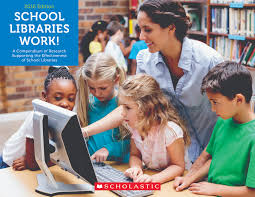With books being cleared out of the library, folks wondered back in 2009, what would happen to the person in charge of the room? Would librarians, now called media specialists, be phased out too, replaced, so to speak, with that six-letter noun/verb Google?
No!

They may be an administrator's most underutilized resource. Learn how schools are freeing them up to help students, faculty, and principals find the information they need.
For a while, the forces seemed aligned to make this happen. The widespread recession hit school budgets and libraries especially hard. Simultaneously, Apple came out with the iPad and more and more schools opted for bringing-your-own-device programs to connect students directly with their digital resource of choice, whether in the library, classroom, or hallway.
But a funny thing seems to be happening to librarians on the way to extinction. The savviest districts and librarians are remaking the position, breaking media specialists out of the library and bringing them into the classroom to help with projects and research-basically, the same skills that used to be cultivated in the quiet of the library. Let's look at the example below to see how today's librarian has indeed evolved from the past "librarian" and into a dynamic, ever-changing school superhero.

Today's Model
Robyn Young could be example number one of the new type of librarian. In her 12 years, she has never shelved a book. She rarely helps students check out materials. Furthermore, the principal of the high school where she works encourages her to move about the school building freely, regardless of the bell schedule.
"The librarian is a different position," says Mike Swank, principal of Avon High School, near Indianapolis. "It serves a different purpose. She's got to have the flexibility to work with the rest of the staff, to share research and best practices."
The more robust the library program, the better students do academically. Not only that, but a credentialed teacher-librarian can become another instructional leader in the building and a go-to resource for the principal.
"A lot of the librarian's practice ends up in the classrooms," Swank says. "You might think that the success of a class is all to do with the teacher, but a lot of the support comes from the media center."
Proof in the Numbers
The link between strong school library programs and student achievement is well documented. Over the past 20 years, numerous studies have shown that elementary schools with at least one full-time certified teacher-librarian performed better on state tests. In a 2010 study conducted in Colorado, more children scored "proficient" or "advanced" in reading in schools with a full-time, credentialed librarian than those without.

The problem, librarians say, is that few administrators know precisely what they do these days. Many still hold on to the outdated stereotype of the librarian from their own school days-the one who shushed you on your first step into the library-and remain unaware of the potential resource at their disposal. As a result, these leaders are unlikely to go to bat to support librarians in their work or to invest in a strong program.
"As certified librarians with a master's degree, our focus is on teaching our students," says Young. "If a principal understands that, that's a huge hurdle [overcome] right there." Breaking the stereotype of librarians just shelving books is the biggest glass ceiling that needs to be shattered throughout American schools.
There are a lot of administrators who believe that the best way to manage staff is to make sure they are in front of 20 to 30 kids all day long, but this is not the case in the collaborative environment of a library. The librarian needs to integrate with everyone, students, teachers, administration, etc.
Equal Access
Strong library programs have the potential to help close the achievement gap for students who live at or below the poverty line. To make room for more library services, teachers nation-wide have agreed to give up their weekly prep periods and continue to have flexible planning time in the mornings with other teachers and librarians. This allows the librarian to collaborate with teachers and lead special lessons on how to use the library both in its physical space and in the classroom.
All in all, librarians absolutely do matter, but their roles have changed. Long ago is the day where librarians stay in the library all day, waiting for students to come through the doors. Rather librarians are truly showing all of their skills and spreading their wings throughout the school itself, reaching out to students instead of taking their historically passive role.




